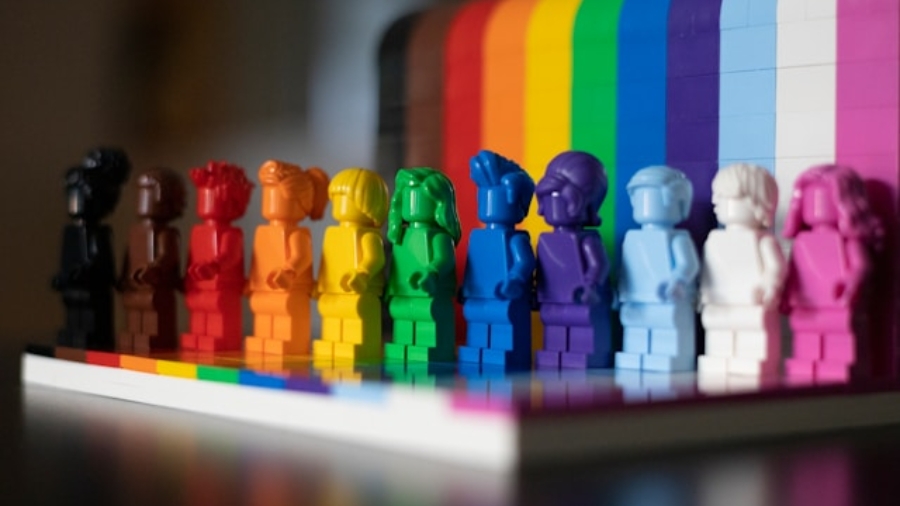How Do I Come Out? A Compassionate Guide to Sharing Your Authentic Self
The question sits heavy in your chest at 2 AM. You’ve typed and deleted the same message seventeen times. Your thumb hovers over the “send” button, and your heart races like you’re about to jump off a cliff. Coming out—those two simple words that carry the weight of your entire world.
If you’re part of the LGBTQ+ community and grappling with how to share your truth, you’re not alone. According to research from The Trevor Project, nearly 1.8 million LGBTQ+ youth seriously consider suicide each year, often due to lack of acceptance and the stress of hiding their identity. But here’s the powerful flip side: the same research shows that having even one accepting adult can reduce suicide risk by 40%. Coming out can literally be life-changing—and life-saving.
This guide isn’t about telling you when to come out or if you should. It’s about helping you navigate this deeply personal journey with intention, safety, and self-compassion.
Understanding What “Coming Out” Really Means
Coming out isn’t a single event—it’s a lifelong process. You’ll “come out” repeatedly throughout your life: to new friends, colleagues, neighbors, healthcare providers, and strangers who make assumptions. GLAAD describes it as “the process of understanding, accepting, and valuing your sexual orientation or gender identity.”
The first person you come out to is yourself. That internal acceptance is the foundation everything else builds upon.
Before you come out to anyone else, ask yourself: Have I fully acknowledged who I am to myself? There’s no rush. Your timeline is valid, whether you come out at 15 or 75.
Assessing Your Safety First
Let’s be brutally honest: safety must come before authenticity. This is the hard truth that no one wants to admit, but it’s essential.
Before coming out, conduct an honest assessment of your situation:
Financial Independence
Do you rely on potentially unsupportive people for housing, tuition, or basic needs? If you’re financially dependent on someone who might react negatively, you may need to wait until you have stability. There’s no shame in strategic timing.
Physical Safety
Are you in an environment where coming out could put you at risk of violence or being kicked out? The National Coalition for the Homeless reports that up to 40% of homeless youth identify as LGBTQ+, often due to family rejection.
Emotional Support Network
Do you have at least one person who already knows and supports you? If not, consider building that foundation first—perhaps through LGBTQ+ support groups or online communities.
Legal Protections
Research your local laws. In some places, your sexual orientation or gender identity may not be legally protected, which could affect employment, housing, or even your safety.
Important: If any of these factors concern you, it’s okay to wait. Survival isn’t cowardice—it’s wisdom.
Creating Your Coming Out Strategy
Once you’ve determined it’s safe to proceed, approach coming out as you would any significant life decision: with preparation and intention.
Choose Your First Person Carefully
Your first coming-out conversation sets the emotional tone for future ones. Select someone who:
- Has shown open-mindedness about LGBTQ+ issues
- You trust with sensitive information
- Has emotional capacity to support you
- Won’t immediately tell others without permission
This might be a close friend, a sibling, a cousin, or even a therapist. It doesn’t have to be your parents first. In fact, Human Rights Campaign research suggests that many LGBTQ+ individuals find it easier to come out to friends before family.
Decide on Your Method
There’s no “right” way to come out. Consider what feels most comfortable:
| Method | Advantages | Considerations |
|---|---|---|
| Face-to-Face | Immediate feedback, emotional connection | More intense, requires courage |
| Letter/Email | Time to articulate thoughts, allows processing | Delayed response, less immediate support |
| Text Message | Less intimidating, casual | May seem too informal for close relationships |
| Group Announcement | Efficient, tell many at once | Doesn’t allow individual processing |
I came out to my best friend over coffee, my parents through a letter, and my extended family via Facebook. Each method suited that relationship and my emotional capacity at the time.
Prepare for Different Reactions
People will surprise you—sometimes wonderfully, sometimes painfully. According to a Pew Research Center study, about 39% of LGBTQ+ adults say they were rejected by a family member or close friend after coming out.
The Supportive Response: “I love you. Thank you for trusting me.” This is the dream, and it happens more often than you might think.
The Confused But Willing: “I don’t really understand, but I want to learn.” This is actually quite positive—it shows openness.
The Silent Treatment: Some people need time to process. Give them space, but set boundaries around how long you’ll wait for engagement.
The Negative Reaction: Rejection, anger, or disappointment. This is the hardest, and it’s not your fault. Their reaction reflects their limitations, not your worth.
The “I Already Knew”: This can feel anticlimactic or validating, depending on your perspective.
Have a support plan ready regardless of the outcome. Know who you’ll call if it goes badly. Have a safe place to go if needed.
Crafting Your Message
What you say matters less than saying it authentically. Here’s a framework that many find helpful:
A Simple Framework
- Express Appreciation
“Thank you for taking time to talk with me about something important.” - State Your Truth Clearly
“I’m gay/lesbian/bisexual/transgender/queer.” Simple and direct works best. - Provide Context If Desired
“I’ve known for [timeframe], and I’m telling you now because I trust you and want to be honest.” - Set Expectations
“I’m not asking you to understand everything immediately, but I hope you’ll continue to love and support me.” - Offer Resources
“If you want to learn more, I can share some helpful websites or we can talk through your questions.”
Pro Tip: Avoid over-explaining or apologizing for who you are. You’re not asking permission—you’re sharing information.
The Aftermath: What Comes Next
Coming out isn’t the end of the story—it’s the beginning of living authentically.
Give People Time
The person you told has likely spent minutes processing something you’ve contemplated for months or years. PFLAG, an organization for families of LGBTQ+ people, notes that acceptance often follows stages similar to grief: denial, anger, bargaining, depression, and acceptance.
Set reasonable boundaries. You can give someone space to process without accepting mistreatment. “I understand this is new information, but I won’t tolerate disrespect” is a completely valid stance.
Build Your Chosen Family
Blood relatives don’t always become your biggest supporters. The LGBTQ+ concept of “chosen family”—close friends and community members who love and accept you unconditionally—can be just as meaningful as biological connections.
Seek out LGBTQ+ community centers, support groups, or online communities where you can connect with others who understand your experience.
Continue Coming Out
Every new person you meet will require a decision: Do I come out to them? How? When? This doesn’t end, but it does get easier with practice.
Some situations will always feel awkward. Small talk with your Uber driver probably doesn’t warrant a coming-out conversation. Your new doctor definitely does need to know, as it affects your healthcare.
Special Considerations for Different Identities
Transgender and Non-Binary Individuals
Coming out as transgender or non-binary involves additional complexity, often including name and pronoun changes, medical transitions, and legal documentation updates. The National Center for Transgender Equality provides comprehensive resources for these specific challenges.
Bisexual and Pansexual Individuals
Bisexual and pansexual individuals often face unique pressures, including erasure and assumptions based on their current partner. Your identity is valid regardless of who you’re dating.
Asexual and Aromantic Individuals
Asexual and aromantic people frequently encounter disbelief or dismissal. Your orientation is real and valid, even in a society obsessed with sexual attraction.
When Coming Out Isn’t Possible
If you’ve determined that coming out isn’t safe right now, you haven’t failed. You’re being strategic about your survival and wellbeing.
Find small ways to honor your identity privately:
- Journal about your experiences
- Engage with LGBTQ+ content online
- Connect anonymously with others through apps and forums
- Plan for future independence while protecting yourself in the present
Your Life Begins When You’re Ready
Coming out doesn’t magically solve every problem or make life effortless. You’ll still have bad days, complicated relationships, and mundane worries. But there’s extraordinary freedom in living honestly.
The weight you’ve been carrying—that constant vigilance about pronouns, stories, and hiding parts of yourself—begins to lift. You can breathe differently. You can exist without editing yourself in real-time.
Remember This
Your truth deserves to be spoken. Your identity deserves to be celebrated. You deserve to take up space exactly as you are.
Whether you come out tomorrow or years from now, to one person or a hundred, remember: This is your journey. Move at your pace. Prioritize your safety. Trust your instincts.
And know that millions of LGBTQ+ people around the world are cheering for you, even if we’ve never met. We’ve been where you are. We’ve felt that 2 AM panic and that thumb hovering over “send.”
Welcome to the beginning of your authentic life.
Join the Conversation
Have you recently come out, or are you still contemplating? Share your story in the comments below—your experience might be exactly what someone else needs to hear.
And if you found this guide helpful, share it with someone who might need it. Sometimes the most powerful coming-out stories are the ones that remind us we’re not alone.


